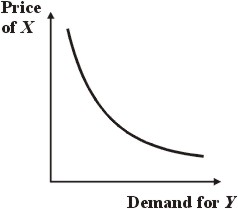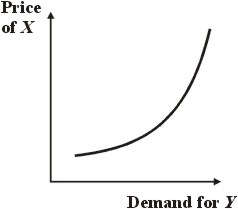Cross elasticity, pricing policy and competition |
The demand for one good can influence the demand for another. |
|
Complements
|
|

|
|
|
For complementary goods, X and Y, when the price of X goes up, the demand for Y goes down.
|
|
|
Substitutes
|
|

|
|
|
For substitutes, X and Y, an increase in the price of X causes an increase in demand for Y, as consumers switch from X to the substitute good Y.
|
|
|
There can also be the equivalent concepts for supply: joint supply (for example, supply of beef and leather), and competitive supply (for example, supply of beef and lamb).
|
|
|
Demand can be influenced by other factors: (a) sociological and demographic; (b) psychological; (c) “Acts of God”; (d) rules and regulations.
|
|
|
Income also influences demand, which leads to the concepts of inferior and superior goods.
|
|
|
One kind of inferior good is called a griffen good. This is a good that can have a positively sloped demand curve. This occurs when the good is a staple good. Thus, when poor people are improverished by a rise in the price of a staple good, they must buy more of the staple good in order to survive.
|
|
|
Cross elasticity of demand measures the responsiveness of demand of one good X to changes in the price of another good Y.
|
|

|
|
|